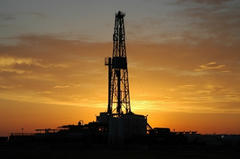 Environment
EnvironmentHealth
Groundwater near natural gas hydraulic fracturing sites in Texas show elevated levels of arsenic, according to a recently published study from the University of Texas at Arlington (UTA).
Findings from the UTA study of the Barnett Shale mirror the Environmental Protection Agency PowerPoint presentation obtained by the Los Angeles Times, which showed increased arsenic in groundwater near fracking sites in Dimock, Pa. According to ProPublica, the EPA also found elevated arsenic in Wyoming groundwater near the Pavillion frack sites in 2009. That study was later abandoned.
Duke University released the results to a study of Marcellus Shale fracking in June, which also linked contaminated groundwater to fracking. Duke found higher levels of methane, ethane and propane — all components of natural gas – in the groundwater.
The UTA graoundwater study found increased heavy metals – concentrations of arsenic, strontium, selenium and barium that were above historic levels.
Researchers sampled water was 100 private water wells in 13 north Texas counties.
“We found that there were actually quite a few examples of elevated constituents, such as heavy metals, the main players being arsenic, selenium and strontium,” said the study’s lead author, Brian Fontenot. “And we found each of those metals at levels that are above EPA’s maximum contaminate limit for drinking water.”
“These heavy metals do naturally occur in the groundwater in this region,” Fontenot added.
Ed Ireland, who heads the industry group Barnett Shale Energy Education Council, said the absence of benzene, toluene, and other so-called BTEX compounds in the water samples is a good sign.
“The study specifically says it did not find any evidence that hydraulic fracturing contaminated groundwater,” Ireland said.
Fontenot told ProPublica that scientists shared their results with the homeowners whose well water was sampled, but they “were not necessarily surprised.”
Fontenot said the study does show “that if you’re going to have a problem with these metals, you’re probably going to have it close to a well.”
He said more research is required.
“Well, I can’t say we have a smoking gun,” said Fontenot.
“But we have shown that these issues do occur in close relation, geographically, to natural gas extraction.”
The Barnett Shale study was recently accepted for publication in the peer-reviewed journal “Environmental Science & Technology.”
Sources: Scientific American, Fort Worth Star Telegram
1 Reported by Opposing Views 13 hours ago.